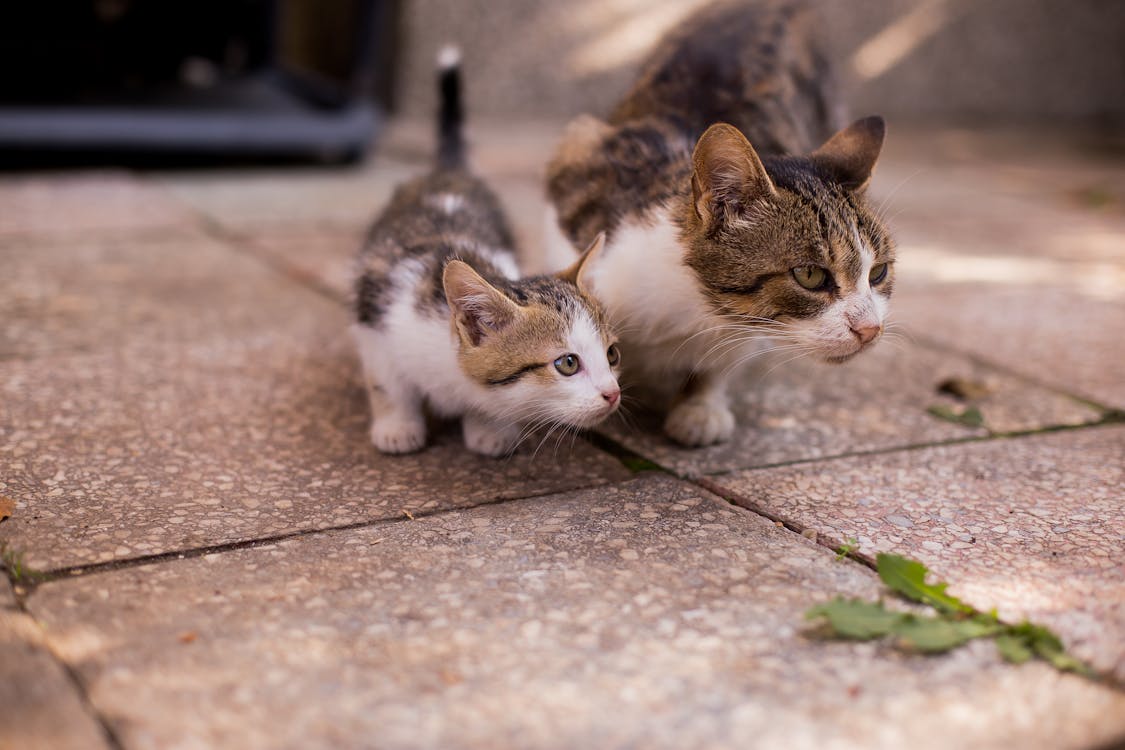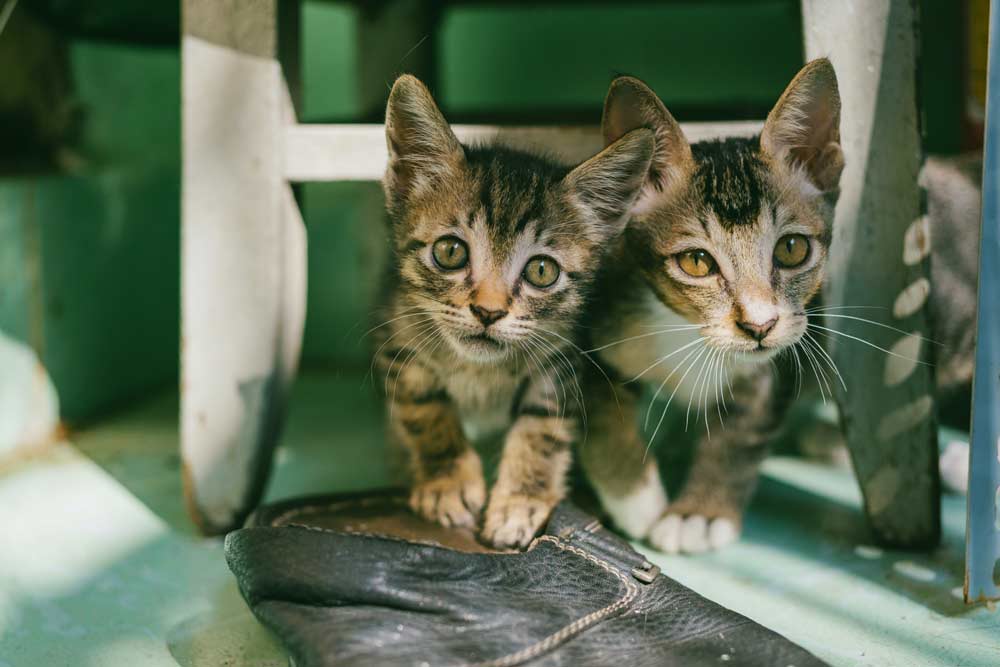What are some common, silent killers of cats? Cats, adored by countless individuals for their endearing companionship, embody an aura of grace and independence. Yet, behind their facade of nonchalance, they harbor susceptibilities to various subtle dangers. These clandestine perils, though not readily discernible, harbor the potential to jeopardize the health and happiness of these beloved creatures. Cat guardians must delve into the intricacies of these hazards to ensure the protection of their cherished feline companions.
Unveiling Covert Threats
Beneath the veil of a cat’s seemingly carefree existence lie lurking dangers that silently encroach upon their well-being. These inconspicuous adversaries, though often overlooked, wield considerable influence over the health of our feline friends. Familiarizing oneself with these inconspicuous threats is paramount, as they possess the capacity to compromise the vitality and longevity of cats.
Silent Killers of Cats Every Pet Owner Must Be Aware Of
Cats, esteemed members of countless households, are not impervious to the perils that lurk within their surroundings. Despite their innate resilience, they remain vulnerable to an array of hidden hazards that imperil their health and vitality. Recognizing and mitigating these clandestine dangers demands vigilance and comprehension from those entrusted with their care. By arming themselves with knowledge, cat owners can shield their beloved pets from harm’s insidious grasp.
1. Silent Threat of Cancer
Stealthy Onset: Cancer can quietly infiltrate a cat’s body, evading detection until it reaches advanced stages. Various forms of cancer, such as lymphoma and mammary tumors, may manifest with subtle symptoms like weight loss, changes in appetite, or palpable lumps beneath the skin.
Early Detection is Key: Timely identification through routine veterinary examinations and diagnostic screenings is paramount in combating this silent adversary. Early intervention increases the likelihood of successful treatment outcomes and enhances the overall prognosis for affected felines.
2. Feline Obesity: A Covert Menace
Sneaky Onset: Obesity stealthily infiltrates a cat’s life, often evading detection until its detrimental effects become apparent. The accumulation of excess weight not only compromises their physical well-being but also elevates the risk of numerous health conditions, including diabetes, joint ailments, and cardiovascular disease.
Underlying Causes: Cats may fall victim to this silent threat due to factors such as a sedentary lifestyle, overindulgence in food, or inadequate nutrition. Addressing these root causes through regular exercise, portion control, and balanced diets is essential in combating feline obesity and promoting overall health.
3. Hidden Perils of Household Plants
Deceptive Allure: Common houseplants, often perceived as harmless decor, can conceal perilous dangers for inquisitive felines. Many seemingly innocuous plants, including lilies, philodendrons, and aloe vera, harbor toxins that pose grave risks when ingested by cats.
Unseen Consequences: Even minor nibbles on toxic plants can trigger a range of adverse reactions in cats, from gastrointestinal disturbances to life-threatening organ damage. To protect feline companions from these hidden hazards, pet owners must exercise vigilance in identifying and promptly removing toxic plants from their living spaces.
4. Hidden Dangers in Everyday Fare
Culinary Hazards: The bustling kitchen, a hub of culinary creativity, conceals a myriad of delectable dangers for cats. Common household foods like chocolate, onions, garlic, and caffeine pose significant toxicity risks to feline companions.
Forbidden Delicacies: Consumption of forbidden foods can result in adverse reactions ranging from gastrointestinal distress to organ failure. Even seemingly harmless treats like bones, raw meat, and fatty scraps can precipitate issues such as gastrointestinal obstructions or pancreatitis in cats.
Vigilance and Education: Pet owners must remain vigilant and educated about the perils of feeding their cats forbidden foods. Proper storage and awareness of toxic substances are crucial in preventing inadvertent ingestion and safeguarding feline health.
5. Treacherous Threats of Ticks and Fleas
Miniature Menaces: Despite their diminutive size, ticks and fleas pose substantial threats to cats’ well-being. These blood-sucking parasites not only induce discomfort but also serve as vectors for various diseases, including Lyme disease and Bartonella.
Health Implications: Untreated infestations can lead to severe health complications such as anemia and skin infections in feline companions. The insidious nature of these parasites underscores the importance of regular preventative measures and diligent grooming practices to mitigate their impact on cats’ health.
Proactive Prevention: Implementing proactive parasite prevention strategies, such as regular application of topical treatments and thorough grooming, is essential in safeguarding cats against the treacherous onslaught of ticks and fleas.
6. Stealthy Indoor Air Pollutants
Invisible Threats: Despite the sanctuary of indoor spaces, unseen dangers lurk in the air in the form of pollutants. Tobacco smoke, household cleaners, and volatile organic compounds (VOCs) emitted from furniture and appliances can pose respiratory hazards for cats.
Respiratory Risks: Prolonged exposure to indoor air pollutants can exacerbate respiratory conditions such as asthma and allergies in feline companions. Additionally, these pollutants may contribute to the development of respiratory diseases over time, posing a silent threat to cats’ health.
Preventive Measures: Maintaining adequate ventilation and utilizing pet-safe cleaning products are crucial steps in mitigating the adverse effects of indoor air pollutants on feline health. By proactively addressing these unseen hazards, pet owners can create a safer and healthier indoor environment for their cats.
7. Hidden Consequences of Stress
Underestimated Impact: Stress is a significant but often overlooked factor in feline health, manifesting in subtle yet impactful ways. Changes in the household environment, such as the introduction of new pets or relocation, can trigger anxiety and stress in cats.
Immune Suppression: Chronic stress weakens the immune system, rendering cats more susceptible to infections and illnesses. Behavioral issues like overgrooming or aggression may also arise as manifestations of underlying stress.
Creating a Safe Environment: Providing a secure and enriching environment is essential in combating the detrimental effects of stress on feline well-being. Implementing stress-reduction strategies and ensuring a consistent and nurturing atmosphere can help alleviate anxiety and promote a healthier lifestyle for cats.

8. Stealthy Dental Dangers
Hidden Oral Threats: Behind a cat’s charming smile lies a potential haven for dental troubles. Dental diseases like gingivitis and periodontal disease silently erode feline oral health, leading to issues such as tooth decay, abscesses, and systemic infections if left unchecked.
Preventive Measures: Regular dental care, including tooth brushing and routine veterinary check-ups, is paramount in combating this silent assailant. By prioritizing oral hygiene and seeking timely professional intervention, pet owners can safeguard their cats from the perils of dental disease.
9. Cryptic Kidney Concerns
Sneaky Renal Decline: The kidneys, indispensable organs tasked with filtering toxins from the bloodstream, can undergo silent deterioration over time. Chronic kidney disease (CKD) often progresses stealthily, with symptoms manifesting only in advanced stages.
Subtle Indications: Cats may display subtle signs of kidney dysfunction, such as increased thirst, weight loss, and lethargy, which may go unnoticed initially. Early detection through regular bloodwork and urinalysis is crucial in managing this insidious condition effectively. How AI, ChatGPT maximizes earnings of many people in minutes
Vigilant Monitoring: Pet owners should prioritize regular veterinary check-ups and screenings to monitor kidney function and detect any signs of renal decline early on. By staying proactive and vigilant, cat guardians can optimize the management of CKD and enhance their feline companions’ quality of life.
10. Subtle Signals of Arthritic Pain
Hidden Struggle: Behind a cat’s graceful demeanor may lurk the silent torment of arthritis. This degenerative joint disease quietly erodes cartilage, resulting in discomfort and stiffness within affected joints.
Recognizing Signs: Cats suffering from arthritis may exhibit subtle changes in behavior, such as reduced activity levels, reluctance to jump or play, and alterations in grooming habits. Attentive pet owners should remain vigilant for these subtle indicators and promptly seek veterinary care for appropriate pain management. Motivation – Mind – Success – Thinking – Productivity – Happiness
Improving Quality of Life: Providing tailored pain relief and supportive care can significantly enhance the quality of life for cats grappling with arthritis. By addressing discomfort and fostering mobility, pet owners can help their feline companions navigate this silent menace with greater comfort and ease.
11. Sneaky Cardiac Complications
Quiet Threat: Heart disease stealthily jeopardizes a cat’s cardiovascular health, often progressing unnoticed until reaching advanced stages. Conditions like hypertrophic cardiomyopathy (HCM) or heartworm disease may silently compromise cardiac function, leading to serious consequences if left untreated.
Subtle Symptoms: Cats afflicted by heart disease may display subtle signs such as lethargy, labored breathing, or fainting episodes, which can easily go unnoticed by pet owners. Regular veterinary examinations, coupled with cardiac screenings, are essential in detecting and managing these covert cardiac concerns. Business – Money Making – Marketing – E-commerce
Early Intervention: Timely detection and intervention play a pivotal role in managing heart disease and mitigating its impact on feline health. Pet owners should prioritize proactive cardiac care to safeguard the well-being of their beloved companions against this silent threat.
12. Subtle Indications of Arthritis
Hidden Struggle: Despite their graceful demeanor, cats may silently contend with the challenges of arthritis. This degenerative joint disease gradually wears down cartilage, resulting in pain and stiffness within affected joints. Health books, guides, exercises, habits, Diets, and more
Subdued Behavior: Cats suffering from arthritis may exhibit subtle behavioral changes, such as decreased activity levels, reluctance to engage in jumping or playing, and alterations in grooming habits. Recognizing these nuanced signs is crucial for early intervention and implementing appropriate pain management strategies to enhance feline comfort and mobility.
13. Quiet Onset of Cardiac Concerns
Stealthy Heart Conditions: Heart disease can stealthily compromise a cat’s cardiovascular health, often progressing unnoticed until advanced stages. Conditions like hypertrophic cardiomyopathy (HCM) or heartworm disease may silently manifest with subtle symptoms such as lethargy, labored breathing, or sporadic fainting episodes. Fitness – Meditation – Diet – Weight Loss – Healthy Living – Yoga
Vigilant Monitoring: Regular veterinary check-ups, supplemented by cardiac screenings, are vital in detecting and managing these hidden threats to feline heart health. Early identification and intervention can significantly improve the prognosis and quality of life for cats affected by cardiac concerns.
14. Concealed Urinary Tract Issues
Underlying Problems: Cats may outwardly appear healthy while silently grappling with urinary tract issues beneath the surface. Conditions like feline lower urinary tract disease (FLUTD) can induce discomfort and urinary obstructions if left unaddressed. RPM 3.0 – 60% CONVERSION & Money for Affiliate Marketing
Subtle Symptoms: Watch for subtle indicators such as straining during urination, the presence of blood in the urine, or inappropriate elimination outside the litter box. Swift veterinary attention and appropriate dietary management are essential in alleviating these concealed yet potentially severe conditions.
15. Veiled Threat of Viral Infections
Underestimated Risks: Viral infections like feline leukemia virus (FeLV) or feline immunodeficiency virus (FIV) pose significant threats to feline health by compromising the immune system. These covert assailants elevate the risk of secondary infections and certain cancers. Cat accessories on Amazon
Preventive Measures: Routine testing and vaccination protocols are critical in curtailing the spread of these silent killers and safeguarding the well-being of feline companions. Early detection and intervention are paramount in managing viral infections and mitigating their adverse effects on cat health.
16. Hidden Household Hazards
Undetected Dangers: Unseen toxins within the home environment can imperil the health of felines without immediate detection. Chemical residues from household cleaners, pesticides, and rodenticides may lurk on surfaces or float in the air, posing ingestion or inhalation threats to curious cats.
Mitigating Risks: Being mindful of pet-safe alternatives to common household products and adopting proper storage practices is imperative in reducing exposure to these silent menaces. By proactively addressing potential hazards, pet owners can safeguard their feline companions from unintended harm.
Other Interesting Articles
- How to Make Your Cat Really Happy: 29 Tips You May Try
- How to Train Your Cat to Stop Urine Marking? 12 Tips
- How Do Cats Communicate Each Other? 11 Body Language
- 24 Ways To Know If You Have An Extremely Happy Cat
- What Smells Do Cats Hate: 34 Scents You Must Avoid
- Everything You Need To Know About Cat Territory Marking
- 12 Reasons Why You Should Adopt A Second Cat
- 12 Reasons Cats Pee Outside the Litter Box: How To Solve
- 14 Reasons Why Cats Overgroom: Surefire Ways To Stop It
- Why is My Cat So Clingy? 13 Common Signs: 9 Caring Tips
- Is Your Cat Bored? 12 Common Signs: What You Can Do
- Stress in Cats: Causes, Symptoms, Remedies, Treatment
- 17 Common Signs Your Cat is Lonely: 10 Tips To Help Recover
- 14 Reasons My Cat is Acting Strange & Scared: What to Do?
- How Do Cats Hunt Their Prey, Mice, Bird, Fish, Rat For Food?
- How To Introduce A New Kitten To An Older Cat: 16 Tips
- 15 Reasons Why Do Cats Lick and Groom Each Other
- Domesticated Cats And Big Cats: 24 Similarities, Differences
- 21 Interesting Facts You Should Know About Feral Cats
- How to Socialize a Feral Kitten in 10 Simple Steps



